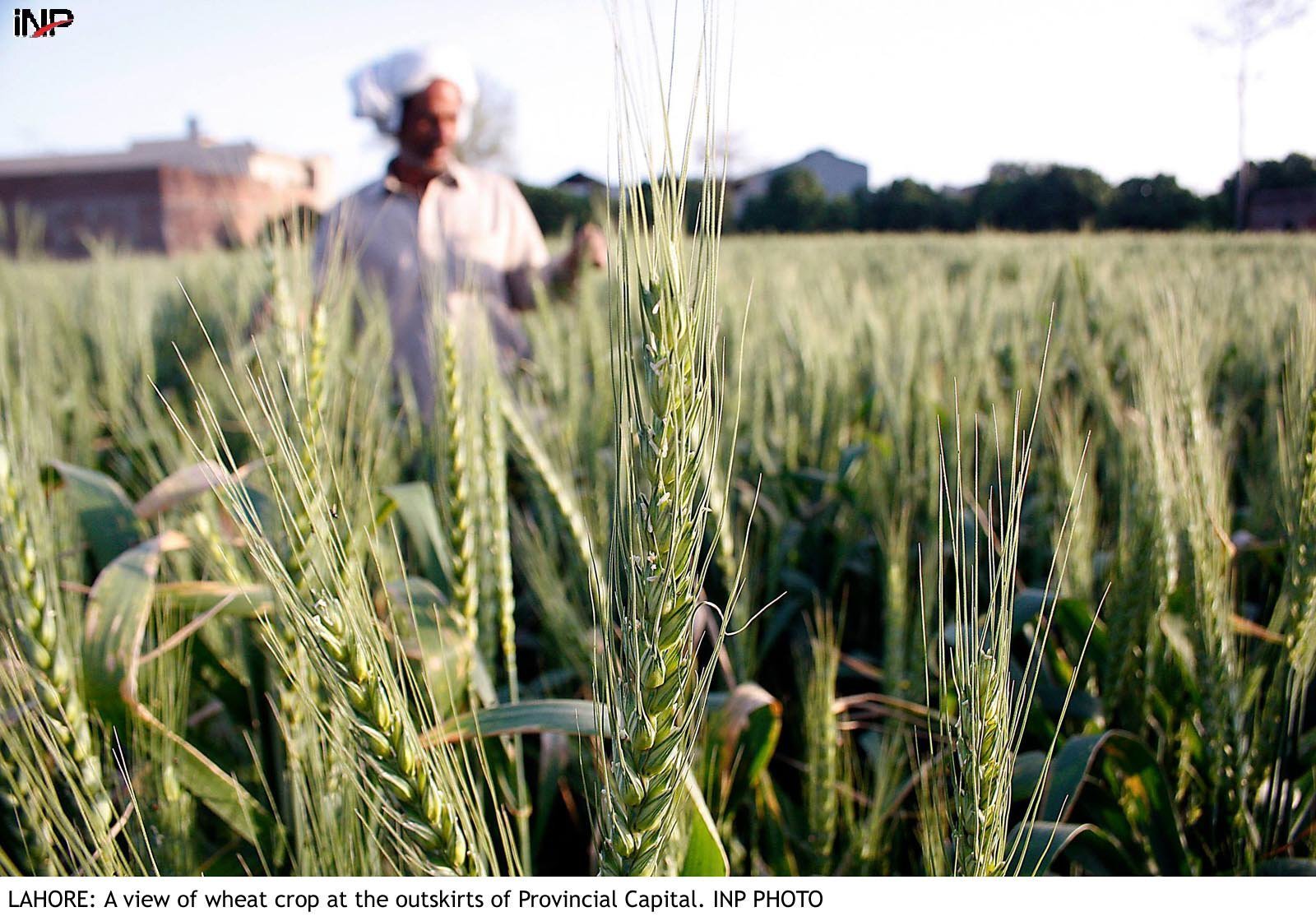Dr Bilawal Kamran
Climate change is a pressing issue that extends far beyond the dramatic images of floods and storms that dominate media coverage. In Pakistan, the impacts of climate change are being felt most acutely by farmers who are increasingly grappling with unpredictable weather patterns, shifting seasons, and new agricultural challenges that have become more frequent and severe. While the catastrophic floods of 2022, which devastated Pakistan’s agriculture and caused significant financial losses, are widely remembered, there is another, less-discussed aspect of climate change’s impact on agriculture: the rising temperatures and altered weather patterns that severely affect crop yields.
In 2022, Sindh province suffered the worst of the floods, with farmers losing around $500 million worth of cotton crops and another $500 million in rice crops, in addition to more than 42,000 animals. These floods followed an extreme heatwave earlier in the same year that caused significant damage to wheat production. Wheat crops, which traditionally thrive in cooler temperatures, were hit hard as the season skipped the spring chill entirely and transitioned abruptly from winter to intense summer heat. Such shifts in temperature and the unpredictability of seasonal changes are becoming increasingly common, illustrating the broader patterns of climate change and its growing toll on agriculture.
For decades, Pakistan’s farmers have been on the frontlines of climate change, and their stories offer valuable insight into the cumulative effects of rising temperatures, erratic rainfall, and shifting agricultural seasons.
These stories, accumulated over the years, reflect not just isolated incidents but a clear, ongoing trend of intensifying climate events. Take, for example, a seasoned farmer in Kunri, District Umerkot, in south-eastern Sindh. In mid-November a decade ago, he recalled that the ideal time to sow wheat had always been between mid-October and mid-November. However, that year, he noted a troubling absence of the usual chill in the air that typically signals the right time for planting. The absence of this seasonal cold meant that the wheat seeds would not germinate properly, leading to lower yields.
Similarly, in 2022, corporate farming teams in District Rahim Yar Khan in southern Punjab found themselves caught off guard by the extended heat of late summer. Traditionally, September temperatures would drop enough to halt the threat of the destructive white fly, a pest that heavily damages cotton crops. But that year, September remained unusually warm, giving the white fly another three weeks to wreak havoc on the cotton fields. Despite government efforts to combat the infestation with drones and pesticides, the damage was significant, leading to a major financial setback for the affected farmers.
The water-related impacts of climate change also present significant challenges for Pakistan’s agriculture. In District Pakpattan, for instance, rice farming relies heavily on water released from India into the Sutlej River during the monsoon season. In 2023, however, excessive rainfall in India led to an overwhelming flow of water through the Sutlej, inundating fields and destroying crops. This combination of water mismanagement and erratic rainfall patterns makes it increasingly difficult for farmers to predict and manage the risks associated with crop production.
These examples are just a few of the ways in which climate events—whether related to temperature, water, or biological threats—are impacting Pakistan’s farmers. With little to no relief or insurance options to protect them, many farmers find themselves financially devastated after each climate-related disaster. For many, the loss of a crop is not just a seasonal setback but a long-term financial blow that makes it harder to recover in the following years.
Pakistan, while not a significant emitter of greenhouse gases, is still highly vulnerable to the forces of climate change. The country’s farmers, however, have not remained passive in the face of these challenges. Many are now asking about crop insurance as a way to safeguard their livelihoods against the increasing frequency and severity of climate events.
In 2008, the Pakistani government introduced the Crop Loan Insurance Scheme, a progressive move aimed at providing financial protection to farmers. Under this scheme, crop insurance was made mandatory for all farmers who took loans from banks, and the premiums were paid by the State Bank of Pakistan for farmers with less than 25 acres of land. At the time, the scheme showed promise, and it provided much-needed financial relief during the devastating floods of 2010, with payouts made to affected farmers. However, the scheme was hampered by two major issues.
First, the insurance payouts were capped at three times the amount of the premium paid, which meant that payouts were limited even when the damage was extensive. According to a recent report by the Securities and Exchange Commission of Pakistan (SECP), between 2008 and 2022, farmers paid a total of Rs 14.3 billion in premiums, but the total payouts amounted to just Rs 6.5 billion, representing only 45% of the premiums paid. This significant shortfall highlights a critical flaw in the system.
Second, the payouts were only made when the government declared a calamity in a specific area. This requirement often led to delays and inconsistencies, as government officials—without adequate training or resources—would declare a disaster based on visible damage, such as flooding or heavy rainfall, rather than on more complex, scientifically-grounded criteria. This approach was evident in 2020 when the cotton crop in southern Punjab and upper Sindh failed due to a combination of pest infestations and untimely rains, but a calamity was only declared in southern Punjab, leaving farmers in upper Sindh without compensation.
Given these constraints, there is now widespread consensus that the crop insurance scheme needs a significant overhaul to better support farmers in the face of climate change. One potential solution is weather-based or parametric insurance, which provides payouts based on specific weather parameters, such as temperature or rainfall, exceeding a predetermined threshold. While weather-based insurance has been piloted in Pakistan by Salaam Takaful, it does not address biological threats, such as pest infestations or plant diseases, and may not fully capture the complex interplay of factors that influence crop yields.
A more promising alternative is Area Yield Index-based Insurance (AYII), which was identified in 2021 by a SECP-led task force as the most suitable form of crop insurance for small farmers. AYII links insurance payouts to the average yield of an area rather than to the performance of an individual farm, making it easier and more cost-effective to administer. If the average yield in an area falls below a pre-defined threshold (typically 30% of the historical average), all farmers in that area receive a payout. This system accounts for multiple factors, such as heatwaves, pests, diseases, excessive rain, and other climate-related threats.
AYII has already been successfully piloted in several districts in Pakistan, including Sheikhupura, Pakpattan, and Rahim Yar Khan, where farmers received payouts after heatwaves, floods, and pest infestations. These pilots have demonstrated the effectiveness of the model and its potential to provide a more reliable safety net for farmers. Following these successful pilots, there is growing support within the banking and insurance sectors for integrating AYII into the existing crop loan insurance scheme. The next step is for the government to expand this system to include more farmers, particularly smallholders, and to pay the premiums for them, as it has done for the Crop Loan Insurance Scheme.
In conclusion, while climate change presents a formidable challenge to Pakistan’s agricultural sector, solutions are available. By reforming and expanding crop insurance schemes—particularly through the implementation of Area Yield Index-based Insurance—Pakistan can provide crucial support to its farmers, helping them navigate the increasingly erratic and extreme weather patterns that define the new reality of global climate change. The time for action is now, and the government must take the necessary steps to protect its farmers and ensure the future of the country’s agriculture.
4o mini















